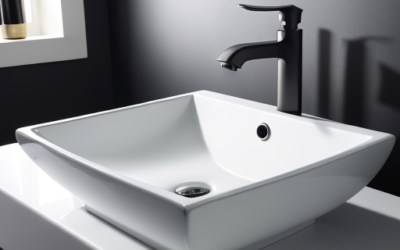Wood works!
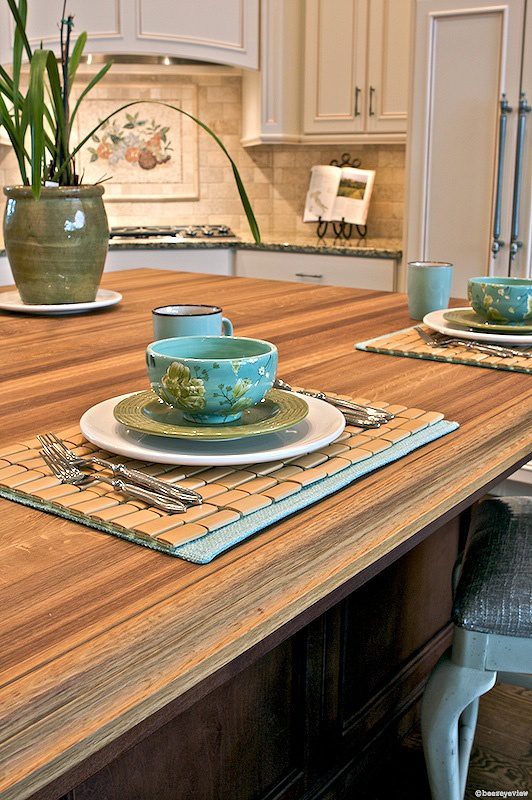
Wood is a natural living material, elegant and sophisticated. Combined with its warm characteristics, it has opened up a beautiful world of design options in countertops for homeowners today. Despite the versatility, timeless elegance, and durability wood offers, many homeowners are apprehensive regarding the use and care.
Cleaning and care
For daily cleanup use a warm washcloth with mild dish soap. If I am cutting meats I will also use 1-part bleach to 10-parts water solution for additional sanitization. The key to keeping daily cleanup easy is to properly seal the wood, and all you need is a cloth rag and mineral oil. No need to buy expensive “wood countertop sealers”; instead, visit the pharmacy section at your favorite store for a regular bottle of mineral oil.
First off, if the countertop is new or you are unaware when it has been sealed you should follow this timeline: oil it once a day for a week, once a week for a month, and once a month forever. And while this may sound tedious, the application is really quite simple. Just apply it in a thick, yet even, coat over the entire surface. Within 24-36 hours, the oil will absorb into the wood, offering a superior stain and germ repellant.
Keep in mind that the more your use the surface, the more often it will need to be sealed, especially during the dry winter months. If you are to see white areas, which is actually the wood drying out and raising up searching for moisture, this means it is time to seal again.
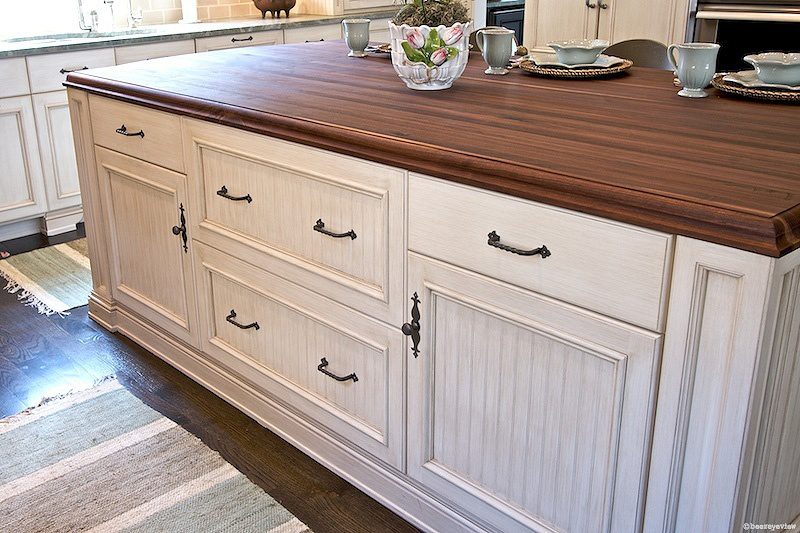
Design matters
Wood countertops have such an incredible presence in a room, quite simply because they give a genuine sense of balance to nearly any space. Wood is warm and relaxing, it tempers the starkness of white palettes, and it offers a universal appeal to any decor. The most popular species used today are walnut, maple, and cherry, but exotics such as zebrawood, tigerwood, African Iroko, and African mahogany are just a few other favorites. In choosing wood for your spaces, give careful consideration to not only the style and decor of the area but also how you plan to use the surface. The construction method (how the top is milled together), the finish, and the thickness all define the style further and offer different degrees of durability.
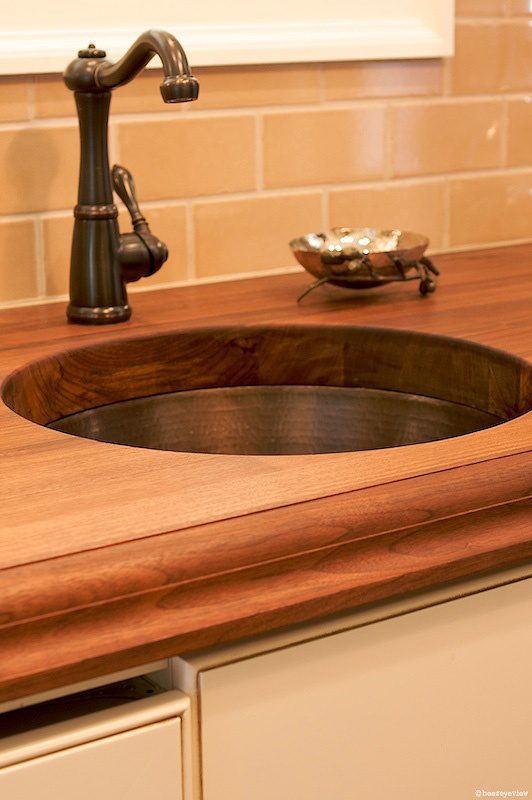
Here are some finish options:
- Waterlox is a watertight finish that is typically used on decorative countertops that are not used for prepping or chopping. If it is used near a water source, refinishing may be required over time.
- Mineral oil is the most requested finish, allowing the homeowner to use the surface for prepping food and to maintain the finish without hiring a professional.
- Many distressing techniques are available, including divots, nicks and scratches, knife marks and rounded corners—all of which can easily be achieved after a few years of use!
Construction methods, top thickness, and edge profiles include:
- Face Grain – Also called Plank Style, this style of counter tops are planks that are fitted together horizontally, showcasing the wood grain. This is the best method for decorative tops.
- Edge Grain – This butcher-block style allows the board lay-up to be thicker—up to 5 inches. This is the most stable method because the planks are narrow, averaging a 1 ¼-inch width.
- End Grain – Also called checkerboard style, this style of countertop is made using planks of wood in vertical positions. This method provides the most durable, heavy-duty application, best for cutting and chopping work.
- Edge Profiles – Edge profiles include ogee, beveled and bull nose; selection is often dependent on the desired thickness, which can range from 1¼ inches all the way up to 15 inches. The most common thickness used today is 2-4 inches.


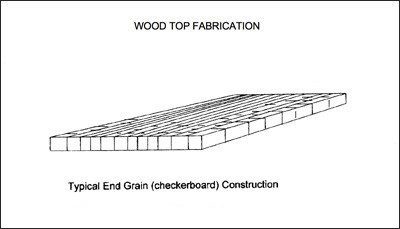
In close, yes, I agree there is maintenance, but the overall value and timeless beauty are hard to beat. I have personally owned a wood countertop in my kitchen for the last 6 years and I truly believe it is a luxury to own one. The best part? Because I love to cook there is no need to pull out cutting boards from a cabinet.

This article was featured in the April issue of Atlanta Home Improvement Magazine.
Photography by Beezeyeview


